Human CAPITAL
Human capital represents people’s competencies, capabilities, experiences and their motivation to innovate.
Approach
The value we place on our people has been reciprocated with over 87 years of industrial harmony and a leadership position in the area of Human Resource Management (HRM) in India. Our work culture ensures safety, good health, development of capabilities, quality of life and overall well-being of our employees. Human Capital comprises our full-time employees and our contract workforce who are looked after by the HRM, Safety and Health functions.
We pride ourselves in the fact that we have a large number of second generation and even third and fourth generation employees. In FY16, we received the All India Organisation of Employers (AIOE-FICCI) National Award for Outstanding Industrial Relations.
The foundation of long-term value creation rests on our philosophy of participative management between Management and the Union. Trust is the cornerstone on which industrial harmony has been built. The three-tier Joint Consultative Process, depicted on the adjacent page, consisting of Joint Departmental Councils at the departmental level, allows issues related to collective bargaining, production and productivity to be addressed effectively.
To drive forth our commitment to labour and human rights, we implemented the Social Accountability Policy encompassing Human Rights at the Workplace. Since 2004, the HRM has been certified to the Social Accountability 8000 standard and subsequently, other units have also been certified.
An equal opportunity employer, our basic salary, employee benefits, remuneration and career progression is the same for men and women. Our compensation and progression changes are aligned with our policies, agreements with the various Unions and Works Standing Orders.
Our Human Resource Policy, Health & Safety Policy, Affirmative Action Policy along with the SA 8000 policy are mindful of human rights, non-discrimination, freedom of association, collective bargaining, zero tolerance for Child Labour, forced and compulsory labour and respect for indigenous rights in all aspects of our business.
Further, the ethos of Fair Business Practices and commitment to principles such as the United Nations Global Compact, the World
Industrial Harmony: Working Together (III Tier Structure)
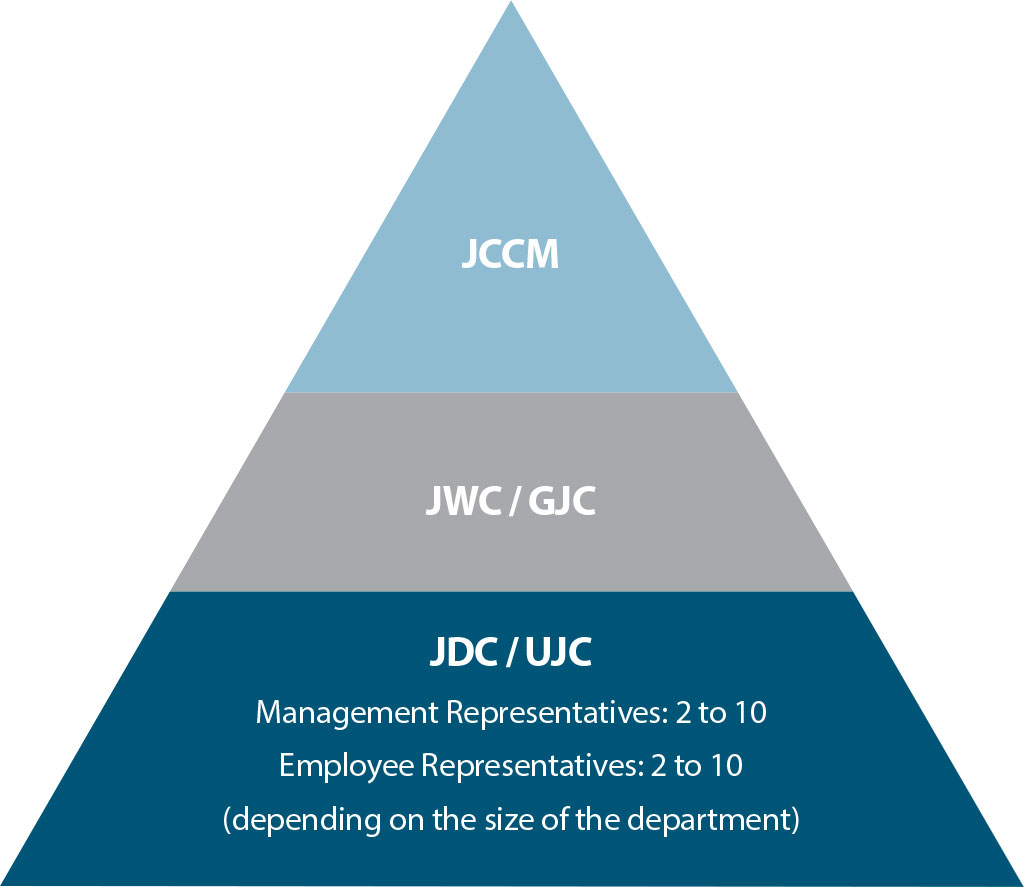
Joint Consultative Council of Management (JCCM)
- Joint Works Quality Committee.
- Hospital Advisory Committee.
- Sports Coordination Advisory Committee.
- Community Development and Social Welfare Advisory Committee.
- Joint Amenities Committee.
- Joint Committee for Employees Training and Development.
Joint Works Council (JWC) / Group Joint Council (GJC) (RMD)
- Central Canteen Managing Committee.
- Suggestion Box Committee.
Joint Department Council (JDC) / Unit Joint Council (UJC) (RMD)
- Suggestion, Agenda and Follow up Sub Committee.
- Quality and Training Sub Committee.
- Safety, Health and Environment Sub Committee.
- Welfare and Amenities Sub Committee.
Steel Sustainability Charter and Tata Code of Conduct have ensured that Human Rights consideration is well integrated into all our decision-making.
We are committed to practicing and propagating the SA 8000 standard, adherence to which is mandatory across our operations and supply chain. We voluntarily submit ourselves to periodic third party audits.
Safety is viewed as a key parameter to demonstrate commitment to people and the community at large. It is an integral part of our decision-making and is the prime consideration in all spheres of our activities including the performance management system for all employees. All our meetings begin with a focused Safety pause.
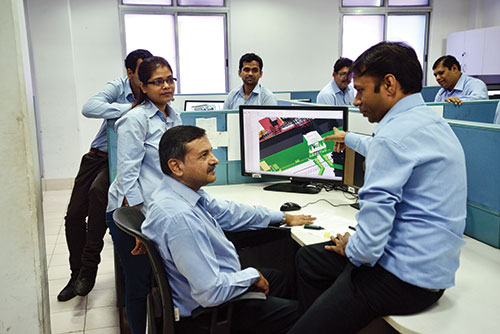
Challenges
During the year, we faced challenges on various fronts. These included –
- Workplace Safety and Health.
- Improving employee productivity and maintaining competitive employee cost.
- Facilitating HRM policy implementation and issue resolution in Kalinganagar.
- Attraction and retention of talent.
- Maintaining and encouraging Diversity and Inclusion.
Workplace Safety and Health Governance
Our Health and Safety Policy is the guideline for our “Safety Excellence Journey”. Workplace Safety and Health is governed through:
- A Management system framework comprising 15 principles and a safety governance structure enabling us to drive the policy.
- The Safety Policy is the foundation for driving the safety principles. The Policy is implemented through safety standards and standard operating procedures at the operating level.
Major safety interventions over the years, under our “Safety Excellence Journey” (SEJ) have resulted in a significant drop in Lost Time Injury Frequency Rates (LTIFR).
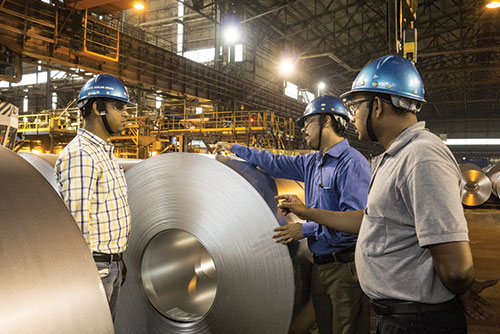
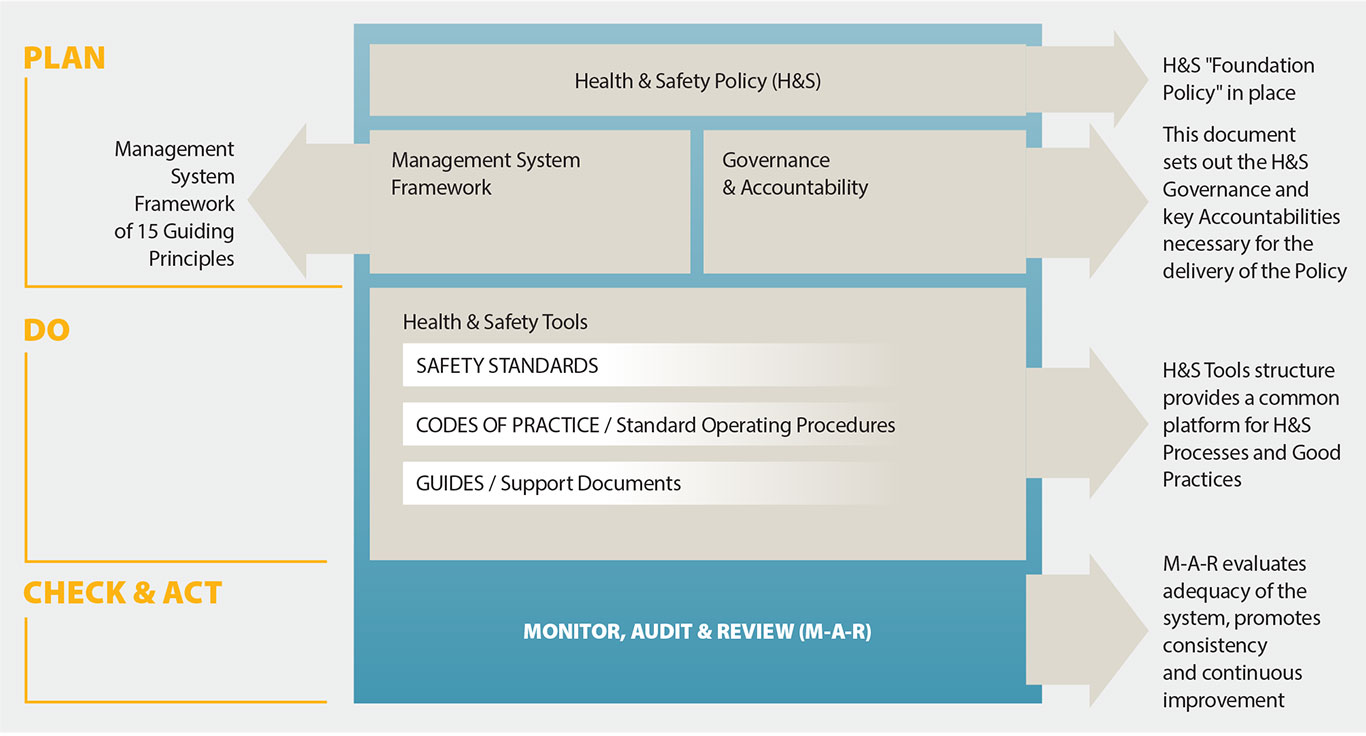
| KPI | UoM | Benchmark | FY14 | FY15 | FY16 |
| LTIFR | Index | 0.20 | 0.5 | 0.31 | 0.23 |
| Fatality | Number | 0 | 12 | 5 | 2 |
| Lost Time Injury | Number | 15 | 164 | 97 | 67 |
| Health Index | Index | NA | 12.8 | 12.21 | 12.35 |
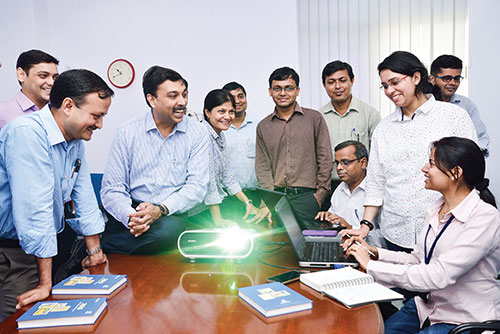
Human Resource Management
We have an integrated Human Resource Management system that caters to all the employees – officers and unionised. In the past several years, our growth and expansion strategy has given rise to staffing needs. These include (i) Capacity expansion of existing units and growth project, (ii) Closure of older units and (iii) Higher capacity units with technically upgraded facilities.
Our HRM structure enables us to be a strategic partner in business by –
- providing a single-window service to customers on all aspects of HRM,
- building HRM competencies,
- undertaking proactive research on strategic issues in the HRM function, and
- undertaking proactive research on strategic issues in the HRM function, and
HRM proactively aligns itself to the strategic directions taken by the business, by taking key decisions on People and larger organisational imperatives. The team has been striving to continuously improve work culture, employee engagement, maintain competitive employee cost, productivity to be the best-in-class organisation.
A key imperative during FY16 was implementation of HRM systems for the successful commissioning of the Kalinganagar Plant. Significant progress was made in building infrastructure, providing appropriate policies and workplace environment for our colleagues at Kalinganagar.
| KPI | UoM | FY12 | FY13 | FY14 | FY15 | FY16 |
| Employee Productivity | Tcs/emp/year | 455 | 512 | 597 | 623 | 701 |
| Employee Engagement of Officers | Score | - | 67 | - | - | 67 |
| Employee Happiness (Unionised employees) | Index (Scale 0-4) | - | 3.29 | - | - | 3.23 |
| Employees involved in improvement activities | % of employees | 74.1 | 79 | 82 | 89.4 | 85.3 |
| Succession Cover Ratio | Ratio | 1:4.2 | 1:3.5 | 1:3.8 | 1:4.0 | 1:3.7 |
| Percentage of skilled manpower | % | - | - | 69.6 | 91.1 | 93.9 |
| Women Employees | % | 5 | 5.2 | 5.4 | 5.4 | 5.5 |
| Affirmative Action | % | 15.7 | 16.3 | 16.2 | 16.3 | 16.9 |
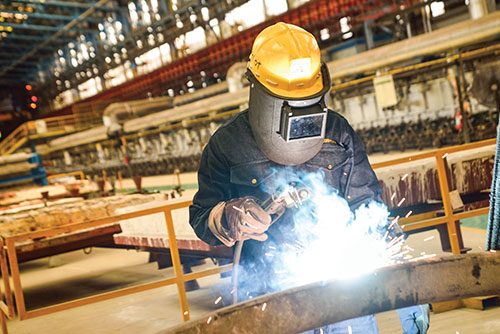
Key Achievements and Initiatives
The year was marked by several initiatives that were rolled out for our employees and some significant achievements. Highlights of a few are given below:
Key Achievements and Initiatives
To achieve our corporate objective of ‘Committed to Zero’, six long-term safety strategies were prioritised and are being implemented through apex safety sub-committees across the organisation.
A capable and competent line organisation, manned by Safety professionals and Safety experts provide the necessary support and guidance in the deployment of the six strategies. Progress is monitored and reviewed at different levels of the organisation from the departmental level to the Safety, Health and Environment Committee of the Board of Directors.
The Six Safety Strategies
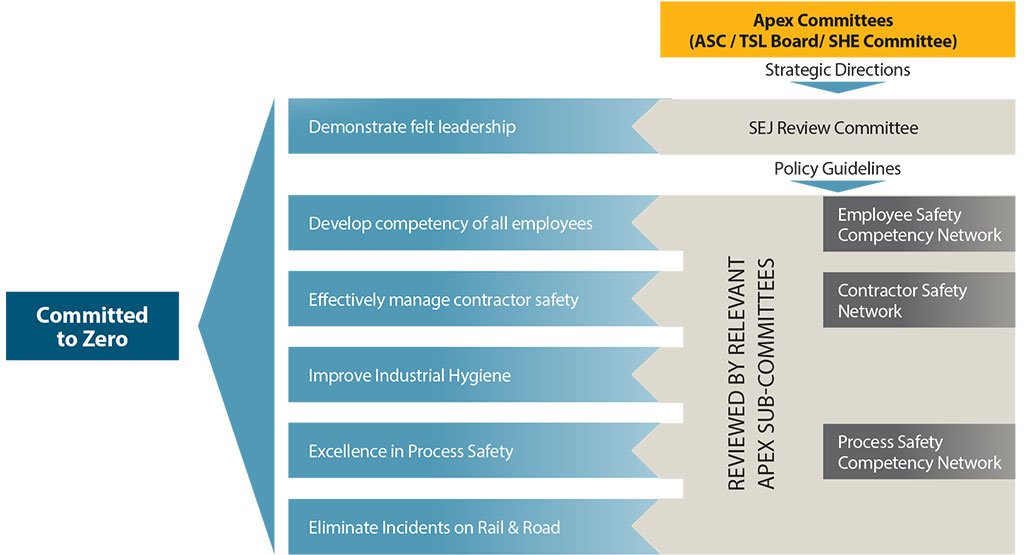
Improving Health Awareness
We continually address key factors that impact employee health in the Mining and Metals industry. Apart from protective measures, we also have key initiatives and processes for preventive healthcare. Recent initiatives, based on evaluation and improvement, include Wellness at Workplace, Emotional Health, Stepathalon/ Marathons and Gyms at the workplace.
India’s first accredited 25 km run, the Tata Steel Kolkata 25K and Stepathalon unlocked exciting new ways for employees to test and improve their fitness. The emotional well-being of employees and their families is taken care of through an Employee Assistance Programme, “Umang”.
Employee productivity and competitive employee cost
We assess our employees’ Learning & Development (L&D) needs through the workforce capability and capacity assessment process. Individual development plans are addressed using the people development architecture depicted on the adjacent page. The plan is customised to address the needs of various categories of employees and covers all segments of the workforce including our contract workforce, vendor partners and distributors.
We have adopted three approaches to improve employee productivity of our unionised employees:
- Training is imparted to enhance skills of employees requiring right skilling.
- Right skilling is intended to offset recruitment.
- Timely project completion and faster ramping up of units through staffing by reskilled employees.
Training and Development led to faster ramp up of new units. Experience gained in different projects during the expansion of the Jamshedpur Works was leveraged and used for performance and cycle time improvements in Kalinganagar.
Special focus was placed on Training and Skill Development to enhance employee productivity by over 12% compared with FY15 to touch 701 tcs/emp/year.
We also introduced an improved approach to Learning & Development using an academy approach for various functions. Employee Competency Building System, e-learning and Vendor Capability Development (VCAP), covered the training needs of the contract workforce as well as distributors. Over 85% of the employees are involved in improvement activities across the organisation.
Leadership Development initiatives
During the year, we conducted the Tata Outbound Leadership Convention, a programme on Transformational Leadership and the Tata Story and Nav Chetna programmes to entrench Tata Values among the employees, especially the large number of new recruits in Kalinganagar. We also implemented the Academy Approach for learning to drive the design and delivery of functional and managerial programmes.
Introduction of New-age Policies Garnering talent:
We undertook several initiatives to garner the requisite talent. Talent was targeted through a variety of programmes for campus relations and events like 'Mind over Matter' for Technology schools and 'Steel-a-Thon' for Business Schools. A Pre-Placement Offer is our pre-hire step to attempt a two-way exposure in hiring where the candidate gets exposed to the organisation and the work culture, while the Company gets a fair glimpse of the candidate’s performance and cultural fit. We aim to achieve 80% conversion rate of our preplacement offer candidates.
People Development Architecture
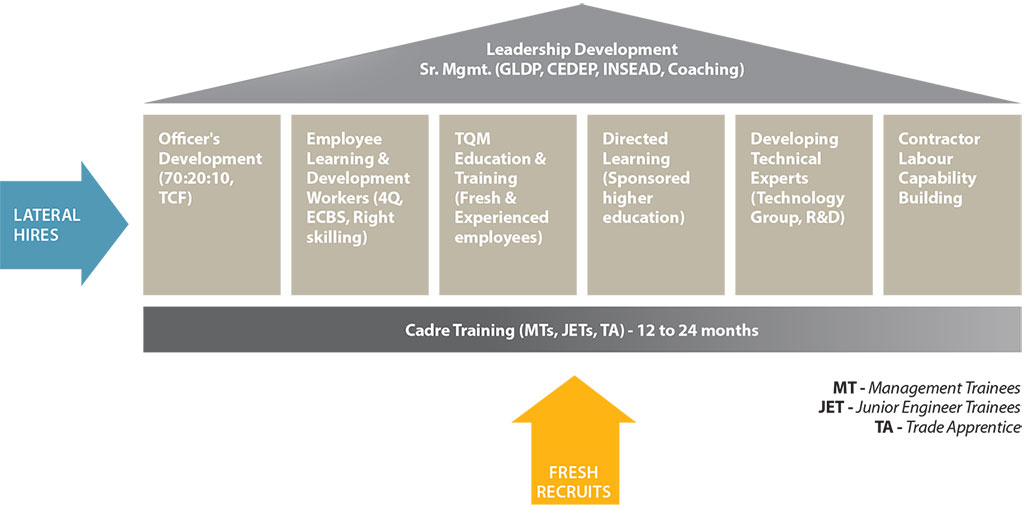
Retaining talent: Our work culture encourages high performance through continuous development and opportunities for growth, in addition to enhancing engagement and motivation through distinctive reward and recognition programmes. We have nurtured a culture of diverse thinking, leading to an array of ideas and initiatives that result in sustained workforce engagement.
Diversity and Inclusion: Diversity and Inclusion and work-life balance were the premise for an array of policies that were rolled out in FY16. These brought about a cultural shift. Key steps taken to align HRM to contemporary needs of employees include:
- Five-day work week.
- Work-from-home policy
- Satellite office operation for spouses.
- Paternity leave.
Succession Planning and Mentoring
We have a robust succession and career planning process which is undertaken level-wise through coaching and mentoring. During the year, mentoring received greater focus through the employee mentorship programme, christened “Disha” in Jamshedpur and “Bandhan” in Kalinganagar.
A very new practice, widely appreciated by employees, is the Reverse-Mentoring process with a focus on technology and digital. Gen Y engages with our senior leadership to assist them in the understanding and use of latest digital technology and Internet resources.
We have a strong job rotation process. Employees with some experience in the organisation are actively encouraged to take up different roles. Despite being a largely flat organisation, this process offers immense opportunity to people to handle different responsibilities under the same band.
Focus Areas
Our aspiration is to provide our employees with the best-in-class work environment. To achieve this, we are working towards strengthening our health and safety practices through various initiatives. We are also focussing on Human Resource Management aspects relating to employee productivity, employee cost, talent management, diversity and inclusion, capability development, employee engagement, contract workforce management and engaging activities to improve employee morale.








